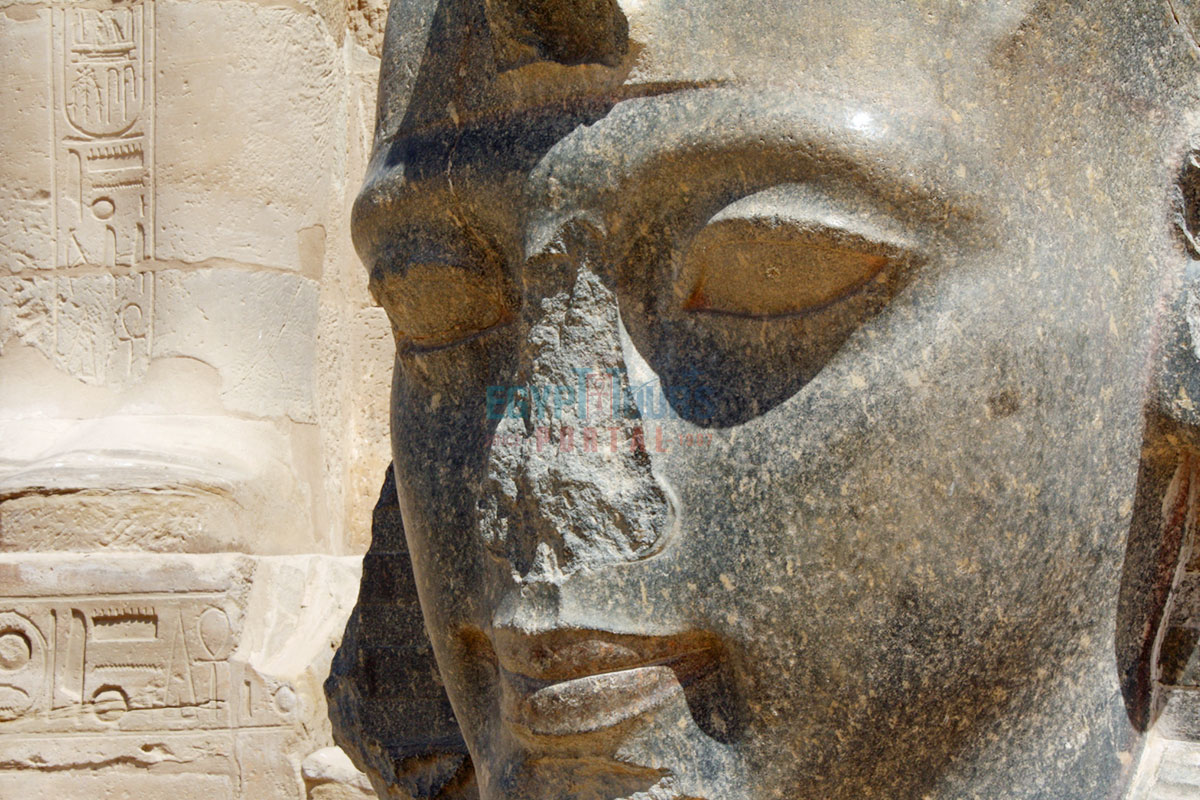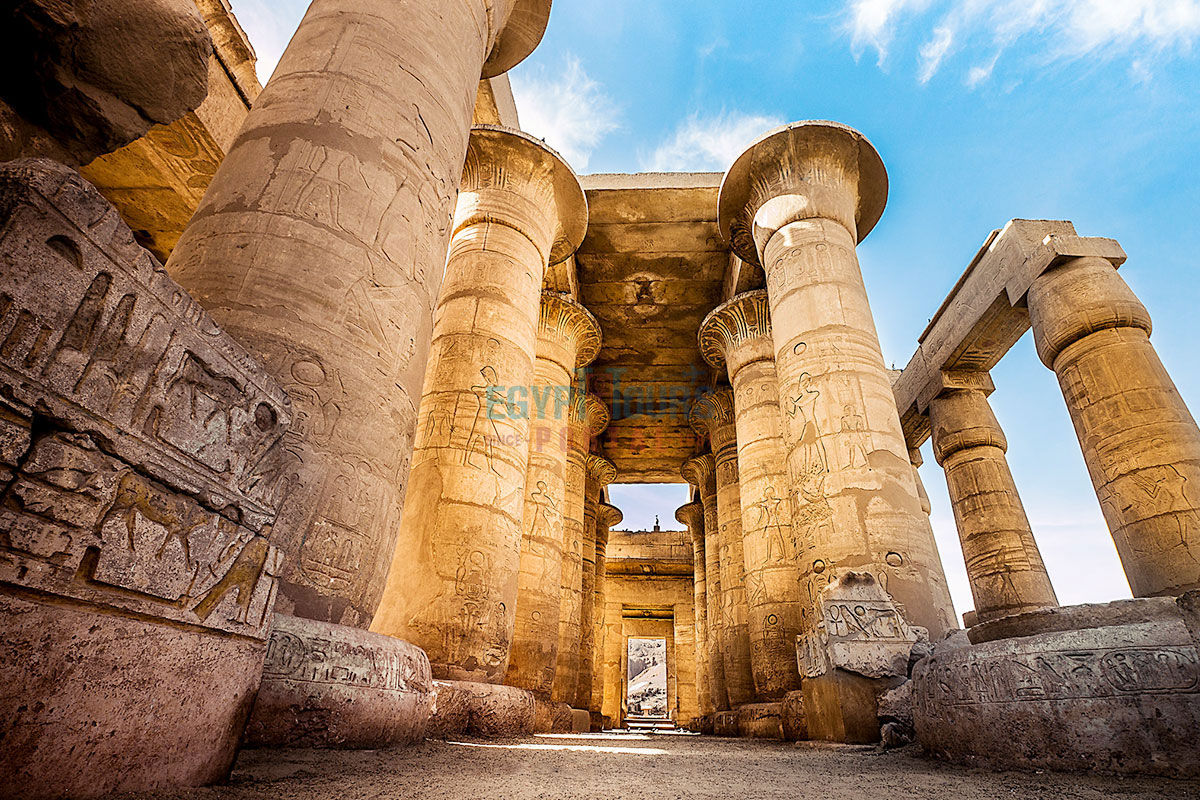Ozymandias, Ramses the Great wished to further immortalize his legacy by constructing a magical house of millions of years of User Maat-Ra that unity the whole city of Thebes with the spectrum of Amun. The Ramesseum temple acts as a time vault filled with memories showcasing the blessed moments and beliefs from the lives of great men and women who created the most incredible civilization the world has ever seen.
The Ramesseum was used as the mortuary temple of Pharaoh Ramses the great (1279 – 1213 BC) located in Upper Egypt in the Theban Necropolis on the Westside of the Nile River across Luxor city and 100 km (62 miles) in the northeast of Cairo which is dedicated for Ra the sun god.

Ramses the Great gained the reputation as one of the most influential kings in the history of the New Kingdom (1550 – 1070 BC) who was also a prolific builder all over Luxor and Aswan. Ramses II (1279 – 1213 BC) ruled for 67 years and he was able to expand his empire in all directions. The Ramesseum temple was dedicated to protecting and displaying his influence and power.

The Ramesseum temple was constructed by Ramses the great plus enlarged by a number of kings such as Ramsess III and Mernptah. One of the most captivating constructions in the Ramesseum temple is the colossal statue of Ramses the great which is more than 1000 tons in weight and reaches a height of 18m it was referred to as Memnonium Temple which was associated with their Memnon legendary hero who is the son of Aurora was happens to be the son of Eos the goddess of Dawn.
The enchanting Ramesseum temple was the inspiration behind the poem of Ozymandias by Percy Bysshe Shelley. Some of the most detailed information about the descriptions and inscriptions of the temple was from Diodorus the Roman historian. It was unfortunately not preserved as Abu Simbel temple and Karnak plus it was extensively restored in 1896 by William Flinders Petrie the Egyptologist who the Isreal Stella of Mernptah who was mentioned in the book of Exodus.

The Ramesseum temple has various remains of the toppled colossus of King Ramesses the great which stood over 6 stories high that was the biggest freestanding statue ever made in Egypt and the largest sculpture ever made anywhere on earth. The decoration found on the grand columns of the hypostyle hall showcases the craftsmanship of that era.
The Ramesseum temple measurements of 220 ft by 600 ft and has the main entrance on its eastern pylon which is decorated with the battle of Kadesh scenes between the Hittites and Ramses II plus on the right side of the pylon is a list of the 118 cities that King Ramses II was able to conquer. In the courtyard of the entrance is a legendary status of Ramsess which hold a text at its feet that translates “My name is Ozymandias, King of Kings: Look upon my works, ye Mighty, and despair“.
In the grand hypostyle hall, there are 48 columns that remain standing also reflecting scenes from the battle of Kadesh. There is also a much older temple which was constructed by Seti I that is dedicated to Amun-Ra on the outside of the hypostyle hall. The second courtyard is in much better condition as it holds two rows of the ruler of the underworld Osiris which represents king Ramses the great. In the south is a small hypostyle hall that holds eight papyrus bud columns. There is a hall of astronomy where there are 12 months illustrated calendars.
There are also scenes of offerings and the divine boat of Amun Ra. On the western hall of the Ramesseum temple is the image of Ramsess the great sitting under the life tree where the god of knowledge Thoth and the goddess Seshat are recording his name across the leaves of the tree to bless him with long life. On the western side of the temple are two vestibules that lead to a library, a linen room, and a sanctuary dedicated to Amun-Ra. In the south of the Ramesseum temple is the small temple of Mern-Ptah the main successor of Ramses II.

